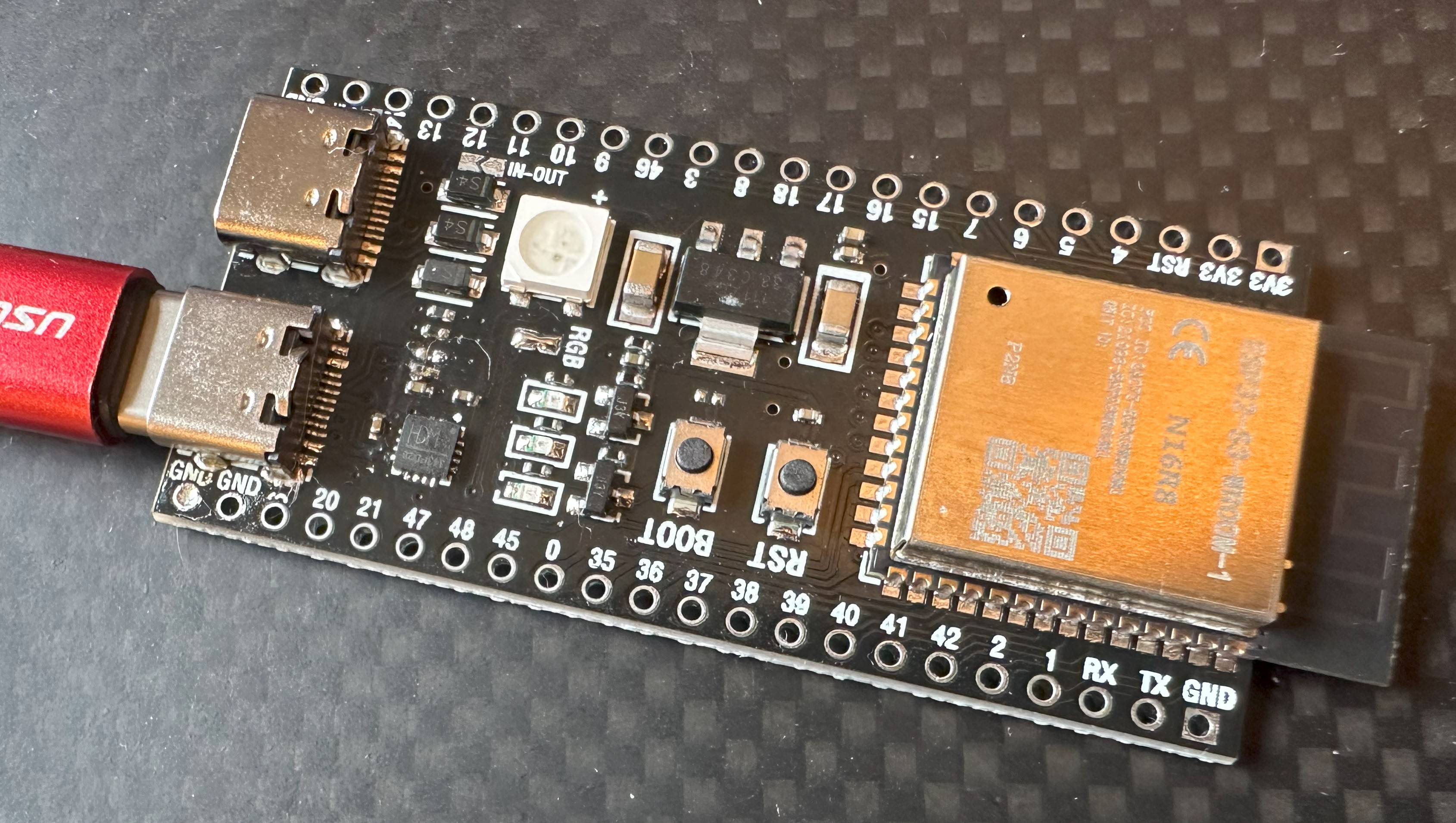-
Spot the Difference
04/07/2024 at 09:05 • 0 commentsCan you tell the difference between these two pictures?
![]()
![]()
The astute among you will realize that the board works when the USB-C is plugged in one-way and not the other.
I bought this ESP32-S3 board as part of a batch and it just wasn't working like the others. Firstly, I discovered that the RGB link needs to be joined for the on-board WS2811 pixel to work. But more important was finding the cause of the fault.
My first, and incorrect assumption was to replace the USB-C socket. Which I did without anything coming to any harm, but it didn't fix the issue. What I'd failed to catch was the obvious: cable orientation behaviour is based on the CC1/CC2 lines. ALWAYS check those first.
Sure enough, my old friend the 5k1 was shorted, but only on CC1. So I removed it, but because I didn't have any 5k1 "in-stock", I then moved the 5k1 resistor from CC2 to CC1; which is why if you're really observant you'll see a missing resistor on the board. The CC1 orientation then powered the board without issue, and confirmed that the shorted 5k1 was the only problem.
So - after a few days I'll have the 0403 5k1 SMD resistor I need to make this board fully working again. My advice to board debugging? Never discount the most obvious things before leaping to the wrong conclusions - if I'd done that I'd have saved myself the dicey swapping of the USB-C socket with a hot air gun.
-
Never What You Think
04/07/2024 at 08:31 • 0 commentsSo I bought an ESP-1, ESP-12, ESP32 programming jig from AliExpress. They look like this:
![]()
It arrived what I thought was DoA. I was unable to get any life out of it. So, as they're cheap, I just ordered another. A second one arrived also DoA, which then got me thinking, what had happened?
After extensive checking of the USB-C connector, I eventually realized there were no 5k1 ground pulldown resistors on the USB-C CC1/CC2 lines. More so, CC1/CC2 weren't even connected beyond their pad.
Once I knew this, I knew what to do to make the board "work". By taking a USB-A to USB-C adapter, and building a frakencable to go USB-C to USB-C VIA USB-A I was able to power the board and communicate with it.
Win.
So what happened here? Well as far as I can work out, old designs in Chinese factories are just getting USB-C sockets slapped on rather than microUSB ones. The result is no regard of the USB-C protocol and its electrical requirements.
Once you know what's happened, everything falls into place. I could add CC1/CC2 5k1 ground wires or I could continue to use a frakencable. But all I can say for sure is, when debugging a problem, it's never what you think.
My Projects
My Pages
Projects I Like & Follow
Share this profile
ShareBits
Become a Hackaday.io Member
Create an account to leave a comment. Already have an account? Log In.
 The Virtual Traveller
The Virtual Traveller


 makeTVee
makeTVee Samuk
Samuk MartMet
MartMet kelvinA
kelvinA Mrinnovative
Mrinnovative Hpsaturn
Hpsaturn Rahul Khanna
Rahul Khanna Tim van Iersel
Tim van Iersel finallyfunctional
finallyfunctional Andrew Woodbridge
Andrew Woodbridge selena1995
selena1995 James Fossey
James Fossey Udara Kumarasena
Udara Kumarasena suikale
suikale Ignacio
Ignacio Ward Almasarani
Ward Almasarani